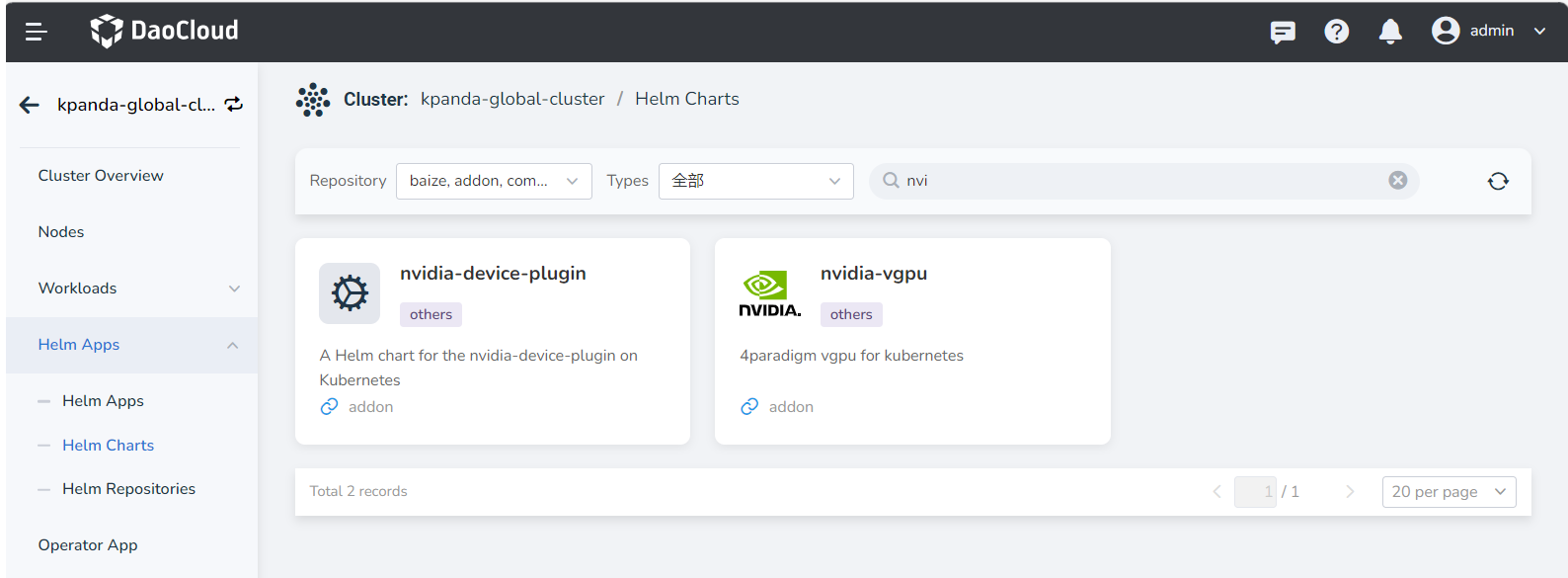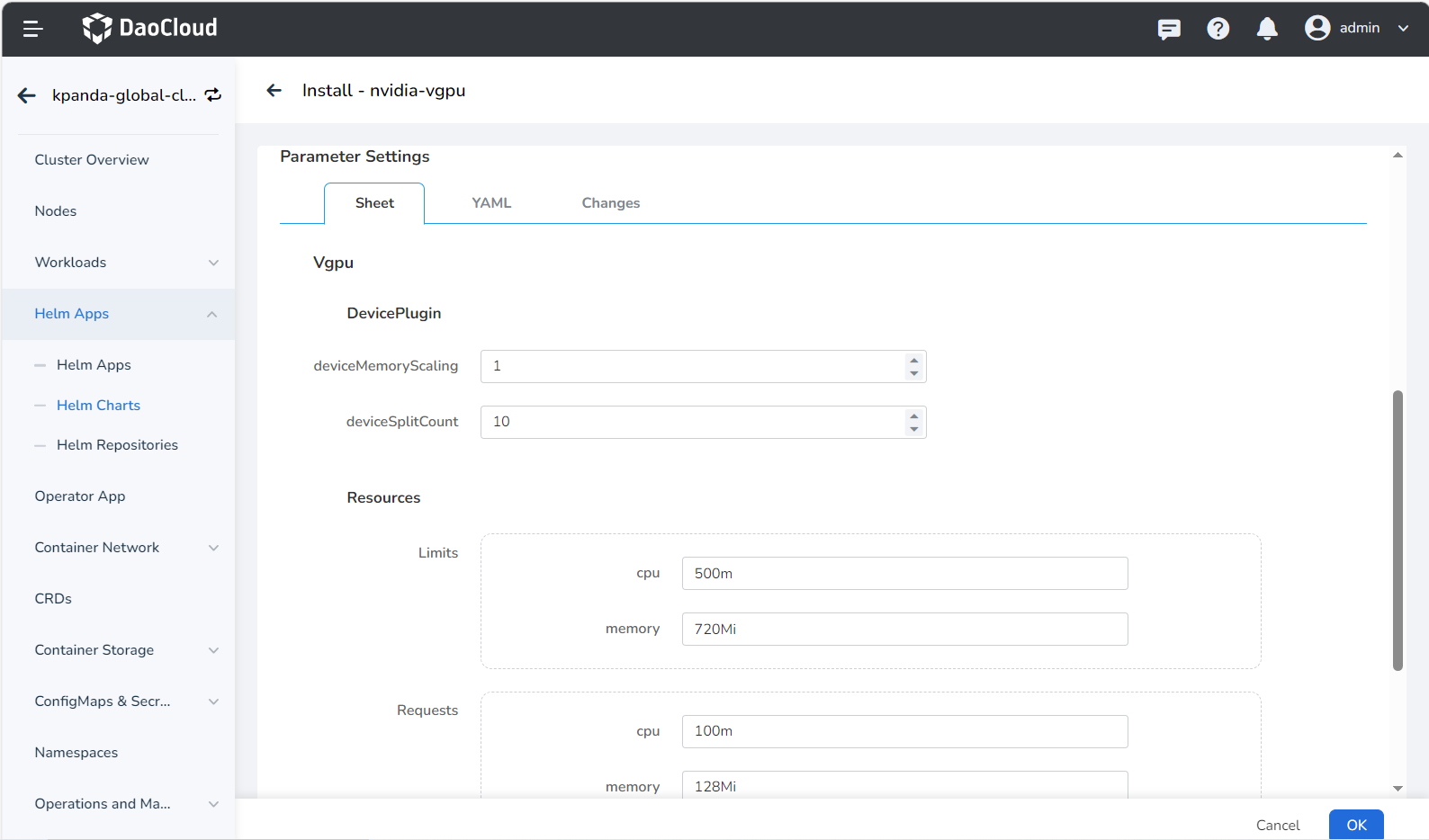vGPU Addon Installation¶
This section explains how to use vGPU capability on the DCE 5.0 platform.
Prerequisites¶
- Ensure that the cluster nodes have the corresponding GPU card model (NVIDIA H100, A100, and A30 Tensor Core GPU).
- The current cluster has been deployed through an operator or manual method, refer to Nvidia Driver Deployment
Procedure¶
-
Module path:
Container Management->Cluster Management-> Click on the target cluster ->Helm Applications->Helm Repository-> Search for nvidia-vgpu.
-
During the installation of vGPU, several basic modification parameters are provided. If you need to modify advanced parameters, click on the YAML column to make the changes:
-
deviceMemoryScaling:Floating-point number type with a default value of 1. It represents the NVIDIA device memory scaling factor, which can be greater than 1 (enabling virtual memory, experimental feature). For an NVIDIA GPU with a memory size of M, if we configure the
devicePlugin.deviceMemoryScalingparameter as S, in a Kubernetes cluster where we have deployed our device plugin, the vGPU allocated from this GPU will have a total memory ofS * M. -
deviceSplitCount:Integer type with a default value of 10. It defines the number of GPU splits, where each GPU cannot be assigned more tasks than its configured count. If it is configured as N, each GPU can have a maximum of N tasks simultaneously.
-
Resources:This corresponds to the resource usage of the vgpu-device-plugin and vgpu-schedule pods.

-
-
After a successful installation, the following two types of pods will appear in the specified
Namespace, indicating that the Nvidia GPU plugin has been installed successfully: